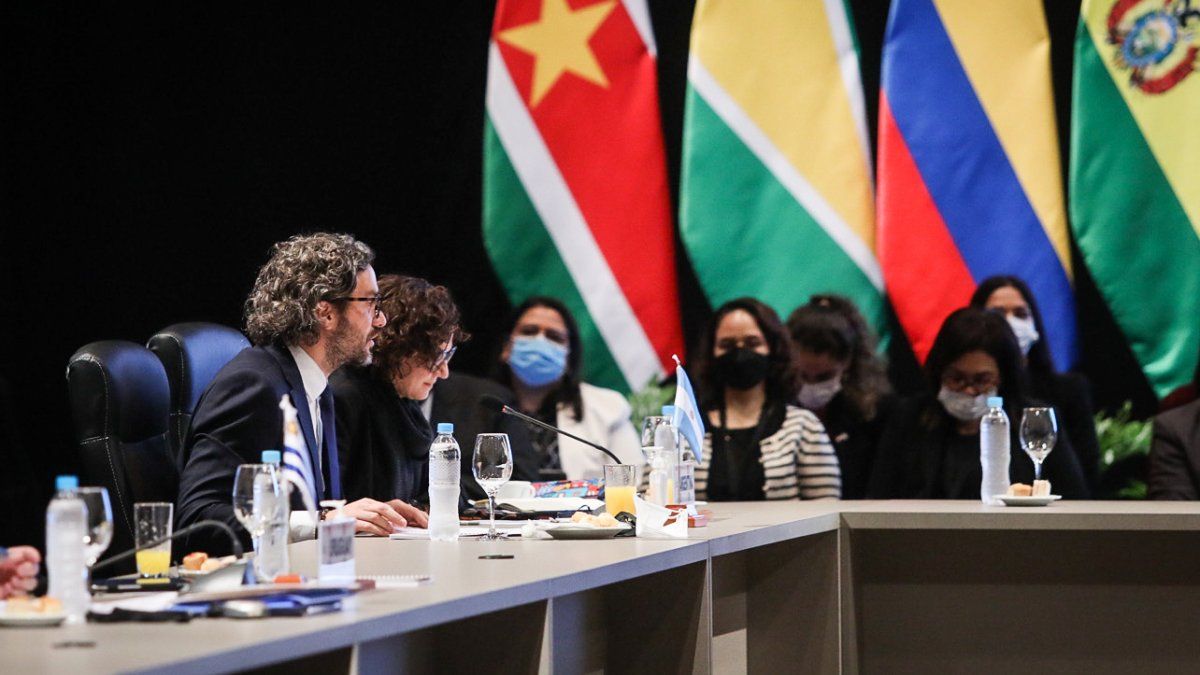Meanwhile, it was also defined that the States will be able to reduce tariffs by 10%, which are currently between 16-35%, although Argentina will not advance in this way. The automotive sector, the main export complex from Argentina to Brazil, will not be included, and The special regimes that have greater tariff protection in sectors considered “sensitive” will be maintainedsuch as textiles, footwear, toys, dairy products, peaches in syrup, among others.
In addition, they clarified that there will be 100 items in which it will be allowed to raise applied national tariffs up to the limit of the World Trade Organization, or reduce tariffs to promote competitiveness, such as the list of exceptions to the Common External Tariff (AEC), the national regime of capital goods, and IT and technology goods. “The agreement preserves the Argentine interest”, they affirmed near the Chancellor, Santiago Cafiero.
industry concern
Sources from the Argentine Industrial Union (UIA) affirmed that the lowering of the tariff generates “concern” in the industry, especially in a context of appreciation of the exchange rate, where competitiveness with Brazil, the main trading partner, is lost. The main criticism has to do with the context in which the measure is defined.
At a political level, they considered that he is “giving in” to pressure from the president of Brazil, Jair Bolsonaro, in a context where he is “weak” in his country, without support from Congress, and two months before the elections, where he could lose. “Regardless of what position Lula Da Silva may have, the dialogue should be different than it is currently with Paulo Guedes,” explained the same source, in relation to the neighboring country’s economy minister.
In addition, from the UIA they consider that it is not conducive in the current international context. “It makes no sense to lower tariffs in a world that does not have an opening agenda, but where there are more obstacles to trade”, commented from the center led by Daniel Funes de Rioja. They mentioned that in the world there is talk of “nearshoring”, a concept that refers to changes in global supply chains, where companies transfer their production to third parties in other countries, with production close to consumption destinations. At the last Summit of the Americas, the Inter-American Development Bank (IDB) projected that nearshoring could contribute US$4 billion in exports to Argentina.
They also expressed concern from the Argentine Business Confederation (Cgera). Although there are sensitive sectors that were left out of the lowering of tariffs, they stated that it is an “advanced” step that will continue. “The advance comes from many years ago by Brazil, and now Uruguay joins with a free trade agreement with China. Mercosur is weakening”stated Raúl Zylbersztein, general secretary of Cgera.
“The measure affects the current industry, but it also condemns us not to think about industrializing more, and more at a time of shortage of foreign exchange,” he added. Meanwhile, he believed that with the lowering of tariffs, progress should be made in other factors that can contribute to competitiveness. “If it’s not trade protection, there could be tax reform or investment plans, but it’s all in the medium term,” Zylbersztein said.
pressure from brazil
The process of lowering tariffs was initiated by Brazil in 2019, with an initial proposal for an average reduction of 50% in the entire nomenclature. He then presented proposals for a transversal reduction of 20%, and finally agreed to implement a decrease of the order of 10%. Last May, it announced the lowering of the tariff in more than 6,000 positions “temporarily” until December 2023, unilaterally.
According to work carried out by technical teams in 2019, the measure that was finally advanced could have negative impacts on the trade balance. Net imports could increase by US$240 million, while exports could fall by US$11 million, which could increase the trade deficit by $251 million.
Source: Ambito
David William is a talented author who has made a name for himself in the world of writing. He is a professional author who writes on a wide range of topics, from general interest to opinion news. David is currently working as a writer at 24 hours worlds where he brings his unique perspective and in-depth research to his articles, making them both informative and engaging.




